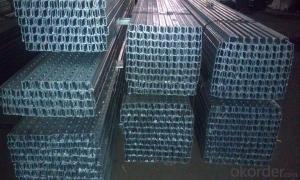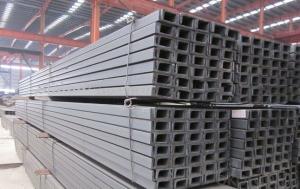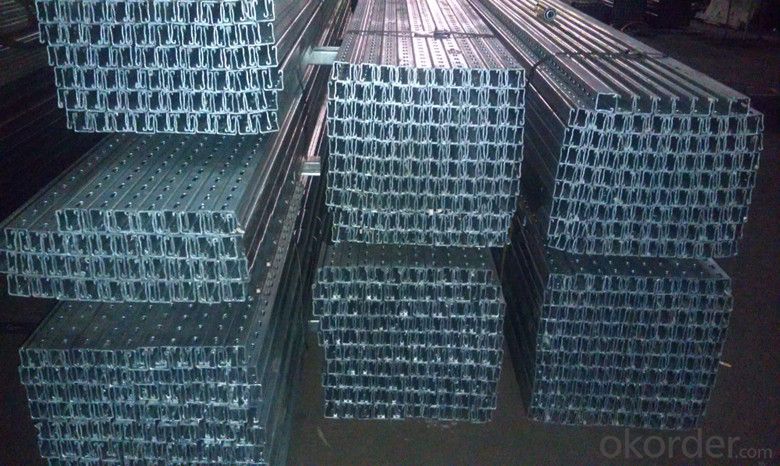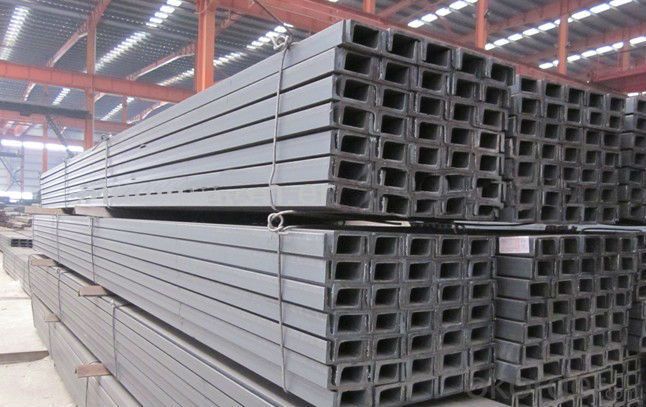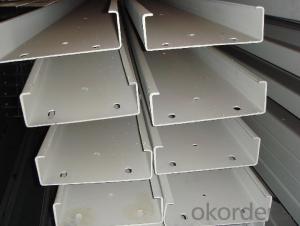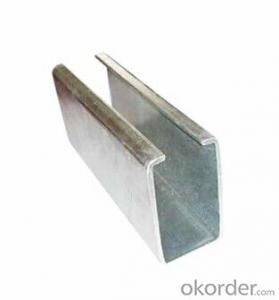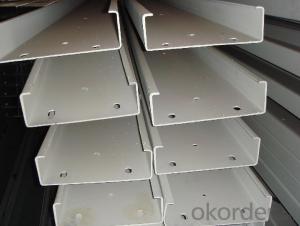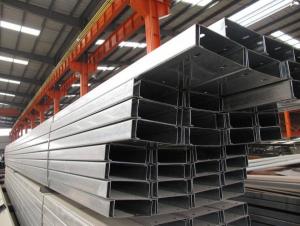C Steel Profile Channel Chinese supplier
- Loading Port:
- Shanghai
- Payment Terms:
- TT OR LC
- Min Order Qty:
- 2000 PCS
- Supply Capability:
- 40000 PCS/month
OKorder Service Pledge
OKorder Financial Service
You Might Also Like
Chinese supplier C Steel Profile Channel Details
Standard: | AISI,ASTM,BS,DIN,GB,JIS | Dimensions: | 41*41,41*21, 41x62,41x82 | Grade: | Aluminum |
Place of Origin: | China (Mainland) | Perforated Or Not: | Is Perforated | Model Number: | HM100t |
Shape: | C Channel | Application: | cable support |
Packaging & Delivery
Packaging Detail: | Packaging Detail: PALLET AS CLIENT REQUIREMENT Delivery Detail: 10-20DAYS |
Delivery Detail: | 20 Days |
Chinese supplier C Steel Profile Channel Specification
Strong anti-rusting
Heavy duty qualified
Free samples provided
Chinese supplier C Steel Profile Channel Description
Light-duty, medium-duty and heavy-duty can be qualified.
Any environmental condition can be applied due to its wide rang of surface treatment and materials options
It has a good ventilation.
Chinese supplier C Steel Profile Channel Pictures
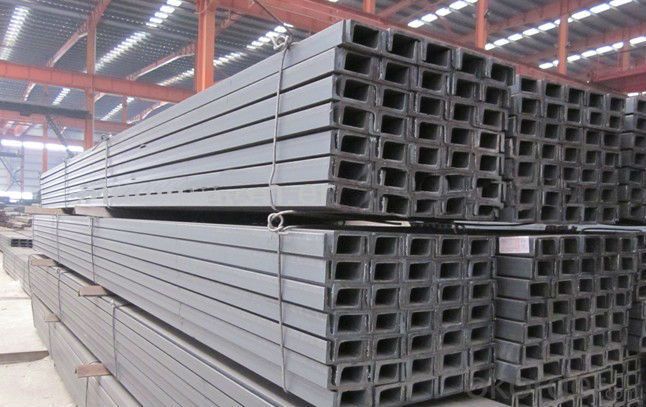
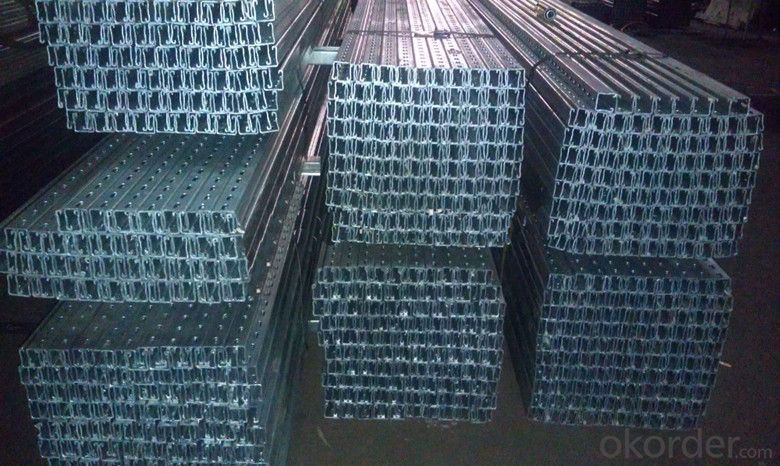
- Q: How do steel channels contribute to the overall longevity of a structure?
- There are several ways in which steel channels contribute to the overall longevity of a structure. Firstly, their strength and durability are well-known. Steel channels can withstand heavy loads and resist deformation, thus ensuring the building's structural integrity over time. This strength is particularly crucial in areas prone to earthquakes, strong winds, or heavy snow loads. Moreover, steel channels offer a high level of corrosion resistance. Steel naturally resists rust and deterioration, especially when adequately coated with protective finishes. This resistance to corrosion guarantees that the structure remains stable and secure for an extended period, even in harsh environments or coastal areas with saltwater exposure concerns. Furthermore, steel channels are highly versatile and easy to customize and fabricate according to specific design requirements. This adaptability empowers architects and engineers to create intricate and innovative structures that are visually appealing and structurally robust. Steel channels can be seamlessly integrated into various building systems, such as framing, roofing, and cladding, facilitating an efficient and streamlined construction process. Additionally, steel channels have an extended lifespan compared to other building materials. Unlike wood or concrete, steel does not rot, warp, or crack over time. This longevity reduces the need for frequent repairs and replacements, ultimately saving time and money in the long term. Moreover, steel is a sustainable and recyclable material, contributing to the overall environmental friendliness of the structure. In conclusion, steel channels significantly contribute to the overall longevity of a structure by providing strength, durability, corrosion resistance, versatility, and a long lifespan. Their ability to withstand various loads and environmental conditions ensures the building's structural integrity, while their customization options and recyclability make them an excellent choice for sustainable construction practices.
- Q: How are steel channels joined together?
- Depending on the specific application and requirements, steel channels can be joined together using a variety of methods. The most common techniques include welding, bolting, riveting, and adhesive bonding. Welding is a widely utilized method for connecting steel channels. It involves melting the metal at the joint, resulting in a strong and durable connection. The choice of welding process, such as arc welding or gas welding, depends on factors like the thickness and composition of the steel channels. Another popular method for joining steel channels is bolting. This technique involves using bolts, nuts, and washers to securely fasten the channels together. Bolting allows for easy disassembly and reassembly, making it suitable for applications that require frequent maintenance or adjustments. Riveting, a traditional method, entails driving a metal pin called a rivet through holes in the steel channels and deforming the end to create a permanent connection. Although it requires specialized tools and skills, riveting can provide a dependable joint. Adhesive bonding is a more recent method that utilizes high-strength adhesives to join steel channels. This technique offers several advantages, including uniform stress distribution, increased fatigue resistance, and improved aesthetics. However, proper surface preparation and suitable adhesive selection are crucial to ensure a reliable bond. In conclusion, welding, bolting, riveting, and adhesive bonding are all suitable techniques for joining steel channels. The choice of method should be based on factors such as load-bearing capacity, ease of assembly, maintenance requirements, and cost.
- Q: Can steel channels be used in high-temperature environments?
- Certainly! Steel channels are capable of being utilized in environments with high temperatures. Steel, being a material that is both highly durable and resistant to heat, is able to endure high temperatures without compromising its structural integrity. It possesses a high melting point and is not easily deformed or weakened when subjected to extreme heat conditions. In industrial settings, steel channels are frequently employed in applications including furnaces, boilers, and equipment for high-temperature processing. Nonetheless, it is crucial to carefully consider the specific grade of steel being employed, as certain types may have restrictions in terms of their ability to resist high temperatures. Moreover, one must also take into account factors such as the duration and frequency of exposure to high temperatures when assessing the suitability of steel channels for a particular high-temperature environment.
- Q: What are the different types of bracing for steel channels?
- There are several types of bracing commonly used for steel channels, including diagonal bracing, cross bracing, and portal bracing. Diagonal bracing involves installing diagonal members between the channels to provide stability and prevent lateral movement. Cross bracing is a technique where members are installed in an X or V pattern to resist both lateral and torsional forces. Portal bracing involves connecting the channels to vertical columns or walls to provide additional support and stiffness. These different types of bracing are used to enhance the structural integrity and strength of steel channels in various applications.
- Q: Can steel channels be used for curtain wall systems?
- Curtain wall systems can utilize steel channels, which serve as the framing system and provide structural support for the attachment of glass panels or cladding materials. These systems are typically made of lightweight materials like aluminum or steel, creating a non-structural exterior wall system that protects against weather conditions. Steel channels offer numerous advantages, including their high strength-to-weight ratio, durability, and ability to be prefabricated off-site for efficient installation. Nonetheless, it is crucial to consider the specific design requirements and load calculations to ensure the steel channels meet the necessary structural and performance criteria for curtain wall systems.
- Q: Are steel channels suitable for use in underground structures?
- Yes, steel channels are suitable for use in underground structures. Steel channels are known for their strength, durability, and resistance to various environmental factors such as moisture and corrosion. This makes them ideal for use in underground structures where they can provide structural support and ensure the integrity of the construction over time.
- Q: Can steel channels be used for roof structures?
- Yes, steel channels can be used for roof structures. Steel channels are strong and durable, making them suitable for supporting the weight of a roof. They can provide structural stability and support, making them a popular choice in construction for various types of roofs.
- Q: Can steel channels be used as support beams?
- Yes, steel channels can be used as support beams. Steel channels, also known as C-channels or U-channels, are commonly used in construction for their strength and structural stability. They are specifically designed to provide support and stability, making them suitable for use as support beams. Steel channels are often used in various applications such as building frames, bridges, and industrial structures, where their load-bearing capabilities are crucial. They offer high strength-to-weight ratio, durability, and resistance to bending and twisting forces, making them an ideal choice for supporting heavy loads and distributing weight effectively. Therefore, steel channels can be confidently used as support beams in various construction projects.
- Q: Can steel channels be used for equipment racks?
- Indeed, equipment racks can utilize steel channels. Renowned for their robustness and endurance, steel channels are frequently employed in the construction sector. When employed for equipment racks, steel channels furnish a resilient and dependable structure to sustain weighty machinery. Adapting them to precise dimensions is effortless, and they can endure the burdens and pressures of diverse equipment types. Furthermore, steel channels can be fashioned with slots or apertures to facilitate the uncomplicated installation and mounting of equipment. All in all, the strength, durability, and adaptability of steel channels render them a favored option for equipment racks.
- Q: How do steel channels perform under impact loads?
- Steel channels typically perform well under impact loads due to their high strength and rigidity. The structural design and composition of steel channels allow them to absorb and distribute impact forces, minimizing deformation and potential damage. This makes them suitable for applications that require resistance to impact, such as construction, automotive, and infrastructure projects.
Send your message to us
C Steel Profile Channel Chinese supplier
- Loading Port:
- Shanghai
- Payment Terms:
- TT OR LC
- Min Order Qty:
- 2000 PCS
- Supply Capability:
- 40000 PCS/month
OKorder Service Pledge
OKorder Financial Service
Similar products
Hot products
Hot Searches
Related keywords
